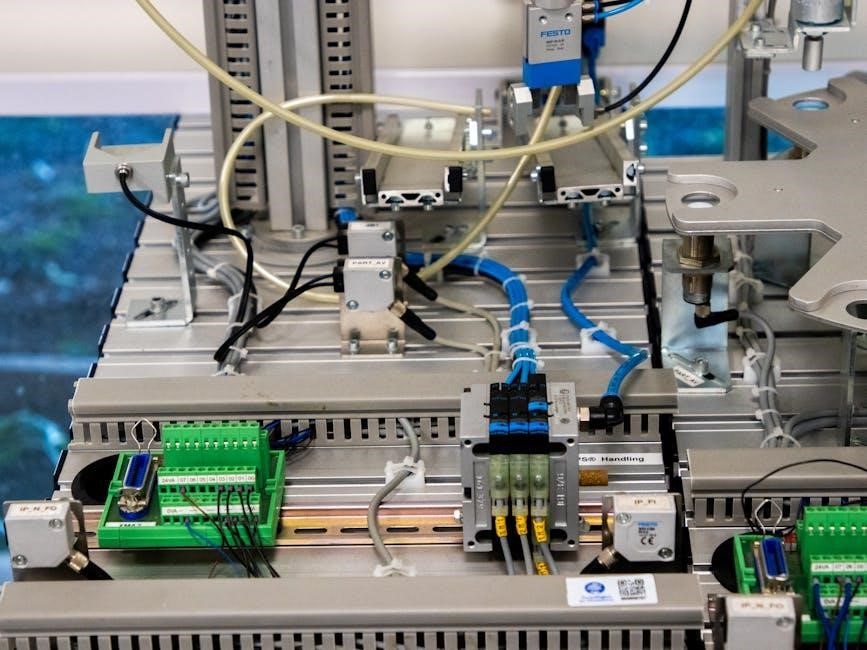Software Engineering at Google: An Overview
Software engineering at Google incorporates practices ensuring a sustainable codebase. The Software Engineering at Google book details these methodologies. Google emphasizes automated testing, code readability, and maintenance over cryptic solutions. Engineering practices documentation covers languages and projects, reflecting collective experience. Google’s approach differs.
At Google, software engineering transcends mere programming; it encompasses practices ensuring codebase sustainability. The “Software Engineering at Google” book, often abbreviated as SWEG, provides insights. These practices include a strong testing culture, code review, and continuous monitoring. Google emphasizes automated testing, code readability, and maintainability, diverging from other tech companies.
Google’s engineering practices documentation covers all languages and projects, reflecting collective experience. These documents provide a pragmatic perspective, building upon the SWEG book and publicly available resources. Google prioritizes code health and sustainability, recognizing software as the backbone of modern business. Engineers focus on sustainable development practices, moving beyond just writing code.
Moreover, Google invests in training and documentation, ensuring engineers are well-versed in best practices. The company fosters a culture of continuous improvement. This approach enables Google to push the boundaries of what’s possible with software, by emphasizing the importance of sustainable and healthy codebases, ensuring long-term project viability. The goal is efficient, harmonious codebases.
Google’s Engineering Practices Documentation (eng-practices)
Google’s eng-practices documentation serves as a comprehensive guide to generalized engineering practices, spanning various languages and projects. It represents the collective experience of Google’s engineers, capturing best practices developed over time. This documentation aims to maintain code quality across Google’s diverse codebase. It offers valuable insights that may benefit open-source projects.
The eng-practices covers a broad range of topics, including testing, code review standards, and general software design principles. It emphasizes the importance of sharing knowledge. This contributes to improving the overall code health of systems. It encourages engineers to follow the principles. The documentation also addresses code readability and maintainability.
Furthermore, Google’s eng-practices are not merely a set of rules. They are based on underlying engineering principles. These principles should guide decision-making, rather than personal opinions. The documentation is continuously updated to ensure accuracy and relevance. This ensures Google’s engineers have access to the latest best practices. It helps them build sustainable and healthy codebases.

Code Review Standards and Best Practices at Google
Code review at Google is a process where someone other than the code’s author examines it. This process maintains the quality of code and products. It is a fundamental aspect of Google’s software engineering culture. The primary goal is to identify potential issues, improve code readability, and ensure adherence to coding standards.
Google’s code review standards emphasize the importance of finding the best reviewers. These reviewers need to respond constructively to the code. Reviewers should focus on identifying bugs, security vulnerabilities, and performance bottlenecks. They should also provide feedback on code style, clarity, and maintainability. Knowledge sharing is a key aspect.
The best practices encourage politeness and professionalism during the review process. Reviews should be constructive and avoid personal attacks. Google’s code review process is not just about finding flaws. It’s about improving the codebase. It promotes collaboration among engineers. They can learn from each other’s expertise.
Automated Testing and Presubmit Checks

Google places a strong emphasis on automated testing and presubmit checks, which is a key differentiator from other tech companies. Automated testing involves creating scripts that automatically verify the functionality of the code. This practice helps to catch bugs early. It also ensures that new code doesn’t break existing functionality. Presubmit checks are automated tests that run before code is submitted.
Google’s “Beyoncé Rule” emphasizes the importance of testing. It encourages developers to write tests for their code. This is to ensure that it functions correctly. Automated tests cover various aspects of the code, including unit tests, integration tests, and end-to-end tests. These tests ensure that the code meets the required standards.
Automated testing and presubmit checks are integral to Google’s continuous integration and continuous delivery (CI/CD) pipeline. These practices help Google to maintain a high level of code quality. It also enables rapid iteration and deployment.

Software Engineering at Google (SWEG) Book: Key Lessons
The Software Engineering at Google (SWEG) book offers crucial insights into Google’s unique approach to software development. It emphasizes engineering practices that ensure codebase sustainability and health. The book moves beyond mere programming, focusing on long-term code maintainability. Key lessons include the importance of comprehensive testing, highlighted by Google’s “Beyoncé Rule.”
SWEG stresses code review as essential for maintaining code quality and knowledge sharing. It promotes automated testing and presubmit checks to catch errors early. The book underscores the value of clear, readable code over clever but cryptic solutions. It also advocates for continuous monitoring and alerting systems to ensure system reliability.
Furthermore, SWEG addresses codebase sustainability and health, offering strategies for managing technical debt. It explains Google’s internal build system, BLAZE, and the unified source code repository. The book provides valuable lessons for any organization seeking to improve its software engineering practices.
Google’s Approach to Codebase Sustainability and Health
Google places paramount importance on codebase sustainability and health, recognizing that software evolves over time. Their approach involves several key strategies to ensure long-term maintainability and reduce technical debt. One crucial aspect is adhering to coding standards and style guides, promoting consistency and readability across the codebase. Code reviews play a vital role in identifying potential issues and ensuring adherence to best practices.
Automated testing is another cornerstone of Google’s approach, with a strong emphasis on unit, integration, and end-to-end tests. Continuous integration and continuous delivery (CI/CD) pipelines help automate the testing and deployment process, enabling rapid feedback and reducing the risk of introducing bugs. Google also invests in tools and infrastructure to monitor code health, identify performance bottlenecks, and detect security vulnerabilities.
Furthermore, Google fosters a culture of ownership and accountability, encouraging engineers to take responsibility for the code they write and maintain. Regular refactoring and code cleanup are essential practices for keeping the codebase healthy and preventing it from becoming overly complex.
Google’s Internal Build System (BLAZE)
Google utilizes an internal build system called BLAZE, designed to manage the complexities of building and testing software within its vast monorepo. BLAZE is a distributed system that compiles code, runs tests, and builds deployable artifacts efficiently. Each project contains a BUILD file outlining dependencies and build rules, allowing engineers to easily build and test any software component.
BLAZE’s distributed nature allows it to leverage thousands of machines, significantly accelerating the build process. This speed is crucial for maintaining developer productivity and enabling rapid iteration. The system is designed to handle Google’s massive scale, supporting numerous languages and platforms.
BLAZE also incorporates advanced features like caching and incremental builds, further optimizing build times. It ensures consistency and reproducibility, making it easier to debug and diagnose issues. Google’s investment in BLAZE underscores its commitment to efficient development workflows and high-quality software. The system’s design reflects the unique challenges of managing a large, constantly evolving codebase.
The Role of a Unified Source Code Repository
Google employs a unified source code repository, often referred to as a monorepo, as a cornerstone of its software engineering practices. This centralized repository houses the vast majority of Google’s code, accessible to all software engineers within the company. This approach fosters collaboration, code reuse, and consistency across different projects and teams.
Having a single repository simplifies dependency management and allows for atomic changes that span multiple projects. Engineers can easily explore and understand the entire codebase, promoting knowledge sharing and innovation. The monorepo also facilitates large-scale refactoring and code improvements, ensuring the overall health and maintainability of the software ecosystem.
Furthermore, a unified repository enables consistent tooling and processes, streamlining development workflows. While managing a monorepo presents unique challenges, such as scalability and performance considerations, Google’s investment in infrastructure and tooling mitigates these issues. The benefits of enhanced collaboration, code reuse, and consistency outweigh the complexities, making the monorepo a vital asset for Google’s software engineering endeavors.

Continuous Monitoring and Alerting Systems
Google emphasizes continuous monitoring and alerting systems as crucial components of its software engineering practices, ensuring the reliability and performance of its services. These systems provide real-time visibility into the health of applications and infrastructure, enabling engineers to proactively identify and address potential issues.
Effective monitoring involves collecting and analyzing metrics from various sources, including application logs, system resources, and user interactions. This data is then used to create dashboards and visualizations that provide insights into system behavior. Alerting systems are configured to trigger notifications when specific thresholds are breached, indicating potential problems.
Google’s approach to alerting focuses on actionable alerts that provide sufficient context for engineers to diagnose and resolve issues quickly. Alert hygiene is paramount, ensuring that alerts are relevant, timely, and not overly sensitive. This prevents alert fatigue and ensures that engineers can focus on the most critical problems. Furthermore, performance degradation with model staleness helps prioritize monitoring efforts. Continuous monitoring and alerting systems are essential for maintaining the stability and availability of Google’s services, contributing to a positive user experience.
Training and Documentation Resources for Engineers
Google invests significantly in training and documentation resources to ensure engineers are well-equipped with the knowledge and skills necessary to build and maintain high-quality software. Comprehensive training courses cover various best practices and standards that Google’s rules require. These courses are designed to educate engineers on coding principles, software design, testing methodologies, and other essential topics.
Documentation is another crucial aspect of Google’s engineering culture. Google invests resources in keeping documentation up to date to ensure that reference material remains accurate and current. This documentation includes style guides, software engineering best practices, code review guidelines, and testing procedures.
Tips of the Week (TotW) are also used to share knowledge and promote best practices. These concise, one-page documents cover a wide range of topics, from dependency injection to code optimization. Google’s commitment to training and documentation empowers engineers to write better code, collaborate effectively, and contribute to the overall success of the organization. The goal is to promote ML-suggested code edits increasing productivity.